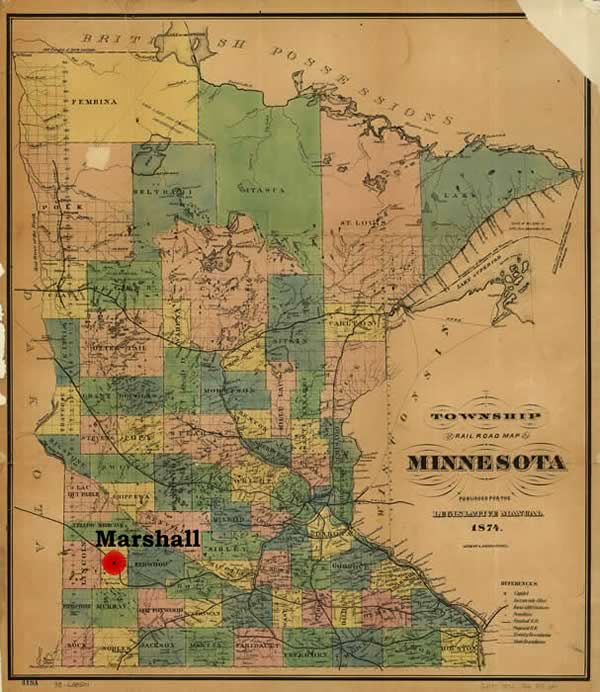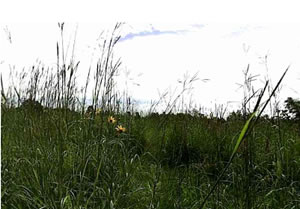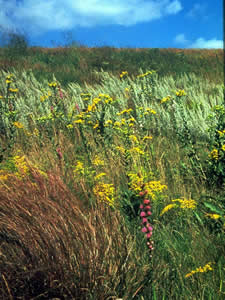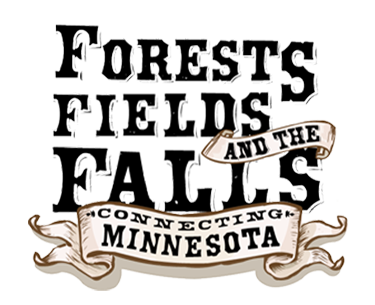Where is Marshall?

Township and railroad map of Minnesota published for the Legislative Manual, 1874.
Library of Congress, Geography and Map Division,
Call No: G4140 1874 .R4 RR 241;
Digital ID: g4140 rr002410 urn:hdl:loc.gmd/g4140.rr002410
"Marshall is located upon the southwest quarter of Section 4, township 111, range 41, at that point in Lyon county where the Winona & St. Peter R. R. crosses the Redwood river. The time was when the towns and country made the Railroads but now, in this part of the word, the converse of the above statement in true, for railroads unquestionably make both towns and country. And it may be truly said that Marshall is a town on railroad creation."
—The Prairie Schooner (Marshall, Minn.), August 23, 1873.
What Is the Prairie?

Tallgrass prairie today.
The first European explorers to encounter the prairie thought it was a barren wasteland, flat, with brownish grasses and no trees. Settlers skipped right over it as America expanded, going straight from the Mississippi River to Oregon in great wagon trains. The few who tried to farm the prairie found that their plows could barely turn over the thick, tuff sod.
Minnesota's tallgrass prairie may have seemed empty at first glance, but it was home to a diverse community of grasses, flowers, insects, and animals who were uniquely adapted to its environment. Trees could not compete in the extreme climate—blizzards, drought, fires—but the prairie survived by existing as much underground as above. The Dakota and other people recognized the bounty of the land and thrived on it for thousands of years.
Only after the introduction of the steel moldboard plow was the prairie cut open and its rich soil revealed. The grasses had held soil in place for millennia, allowing the accumulation of valuable topsoil as deep as fifteen feet and making the Minnesota prairie one of the most productive places on earth for farming grains.
Why Are There So Few Trees on the Prairie?

Photo courtesy of the Lady Bird Johnson Wildflower Center.
Two reasons: Most trees would have a hard time surviving the prairie's droughts and extreme temperatures. And wildfires burn through the grasses regularly, helping the prairie replenish but killing most trees.

